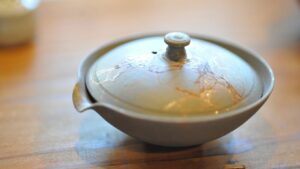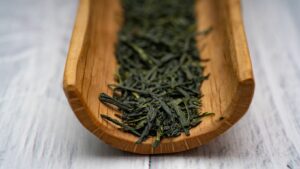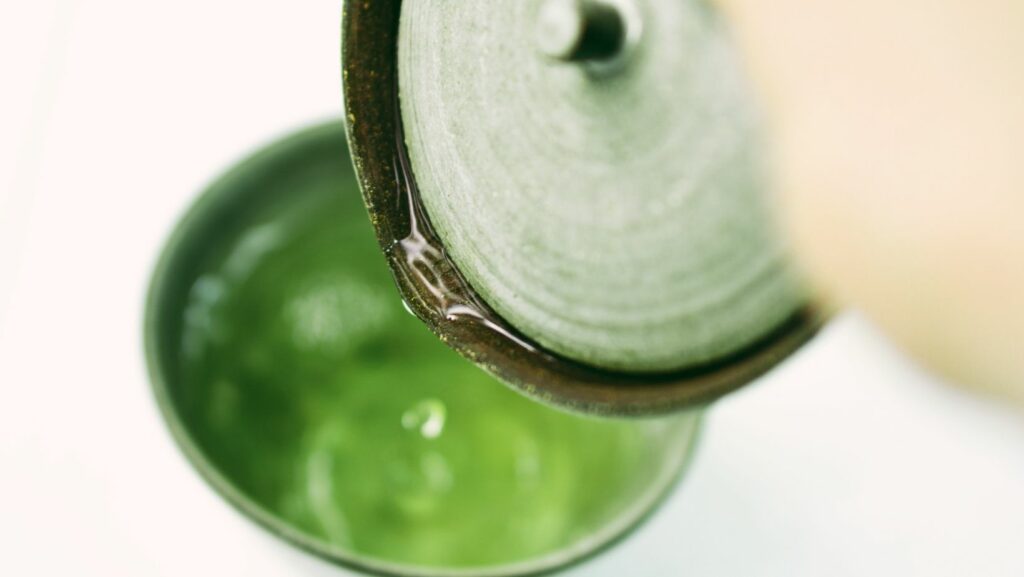 Known for its delicate flavor and vibrant green color, brewing gyokuro is an art form cherished by tea enthusiasts worldwide. Considered one of the finest green teas in Japan, gyokuro is shaded before harvest to enhance its umami taste and sweet aroma. Brewing gyokuro requires precision and care to unlock its full potential. From the exact water temperature to the steeping time, every detail plays a crucial role in extracting the tea’s complex flavors. Whether you’re a seasoned tea connoisseur or a curious beginner, mastering the art of brewing gyokuro promises a sensory journey like no other. Embark on a tea brewing experience that transcends the ordinary and discover the nuances of gyokuro with each meticulously crafted cup.
Known for its delicate flavor and vibrant green color, brewing gyokuro is an art form cherished by tea enthusiasts worldwide. Considered one of the finest green teas in Japan, gyokuro is shaded before harvest to enhance its umami taste and sweet aroma. Brewing gyokuro requires precision and care to unlock its full potential. From the exact water temperature to the steeping time, every detail plays a crucial role in extracting the tea’s complex flavors. Whether you’re a seasoned tea connoisseur or a curious beginner, mastering the art of brewing gyokuro promises a sensory journey like no other. Embark on a tea brewing experience that transcends the ordinary and discover the nuances of gyokuro with each meticulously crafted cup.
Brewing Gyokuro
 Brewing gyokuro requires attention to detail to bring out its exquisite flavors. To brew a perfect cup of gyokuro, one must first select high-quality gyokuro leaves, known for their vibrant green color and rich umami taste.
Brewing gyokuro requires attention to detail to bring out its exquisite flavors. To brew a perfect cup of gyokuro, one must first select high-quality gyokuro leaves, known for their vibrant green color and rich umami taste.
Next, it’s crucial to use water that is around 140°F (60°C) to 150°F (65°C), as the low temperature helps extract the unique flavors of gyokuro without bringing out bitterness. Steeping gyokuro for about 2 to 3 minutes allows the leaves to unfurl gradually, releasing complex flavors and aromas. The resulting brew offers a delicate balance of sweetness, umami, and vegetal notes, providing a sensory experience unlike any other green tea. Brewing gyokuro is a ritual that rewards tea enthusiasts with a truly remarkable cup of tea that embodies the essence of Japanese tea culture.
Brewing Gyokuro
Brewing gyokuro requires attention to detail to unlock its renowned delicate flavor and vibrant color. The shading process before harvest enhances its umami taste and sweet aroma, making it a favorite among tea enthusiasts. Achieving the perfect cup involves precise factors like water temperature and steeping time to fully appreciate the tea’s complexity.
Water Temperature and Quality
 Using water heated to around 140°F to 150°F (60°C to 65°C) is crucial when brewing gyokuro to prevent bitterness. High-quality water, free from impurities, complements the tea leaves’ unique characteristics. The right temperature allows the leaves to release their flavors gradually, resulting in a harmonious blend of sweetness, umami, and vegetal notes in the final brew. Selecting high-quality gyokuro leaves is essential for a flavorful brew. The ratio of leaves to water influences the tea’s strength and flavor profile. Optimal results are achieved when using a higher concentration of leaves to water, allowing for a richer and more aromatic cup. Experimenting with different ratios can help individuals tailor the taste to their preference, whether they enjoy a milder or more robust brew.
Using water heated to around 140°F to 150°F (60°C to 65°C) is crucial when brewing gyokuro to prevent bitterness. High-quality water, free from impurities, complements the tea leaves’ unique characteristics. The right temperature allows the leaves to release their flavors gradually, resulting in a harmonious blend of sweetness, umami, and vegetal notes in the final brew. Selecting high-quality gyokuro leaves is essential for a flavorful brew. The ratio of leaves to water influences the tea’s strength and flavor profile. Optimal results are achieved when using a higher concentration of leaves to water, allowing for a richer and more aromatic cup. Experimenting with different ratios can help individuals tailor the taste to their preference, whether they enjoy a milder or more robust brew.
Great Practices for Brewing Gyokuro
- Choose high-quality gyokuro leaves from a reputable source to ensure the better flavor.
- Use water heated to 140°F (60°C) to 150°F (65°F) to avoid bitterness.
- Steep the leaves for 2 to 3 minutes for a delicate balance of flavors.
- Opt for high-quality water free from impurities to enhance the tea’s characteristics.
- Adjust the ratio of leaves to water to personalize the strength and flavor of the tea.
Brewing gyokuro is a meticulous art that requires attention to detail and quality ingredients. By understanding the importance of factors like water temperature, steeping time, and leaf-to-water ratio, one can unlock the full potential of this esteemed Japanese green tea. The unique shading process and careful cultivation of gyokuro leaves contribute to its distinct umami taste and sweet aroma, captivating tea enthusiasts worldwide. Embracing the precision of brewing gyokuro not only enhances the flavors but also allows for a sensory experience that embodies the essence of Japanese tea culture. With the right techniques and a dedication to excellence, brewing a perfect cup of gyokuro becomes a rewarding journey that showcases the beauty and complexity of this revered tea variety.

